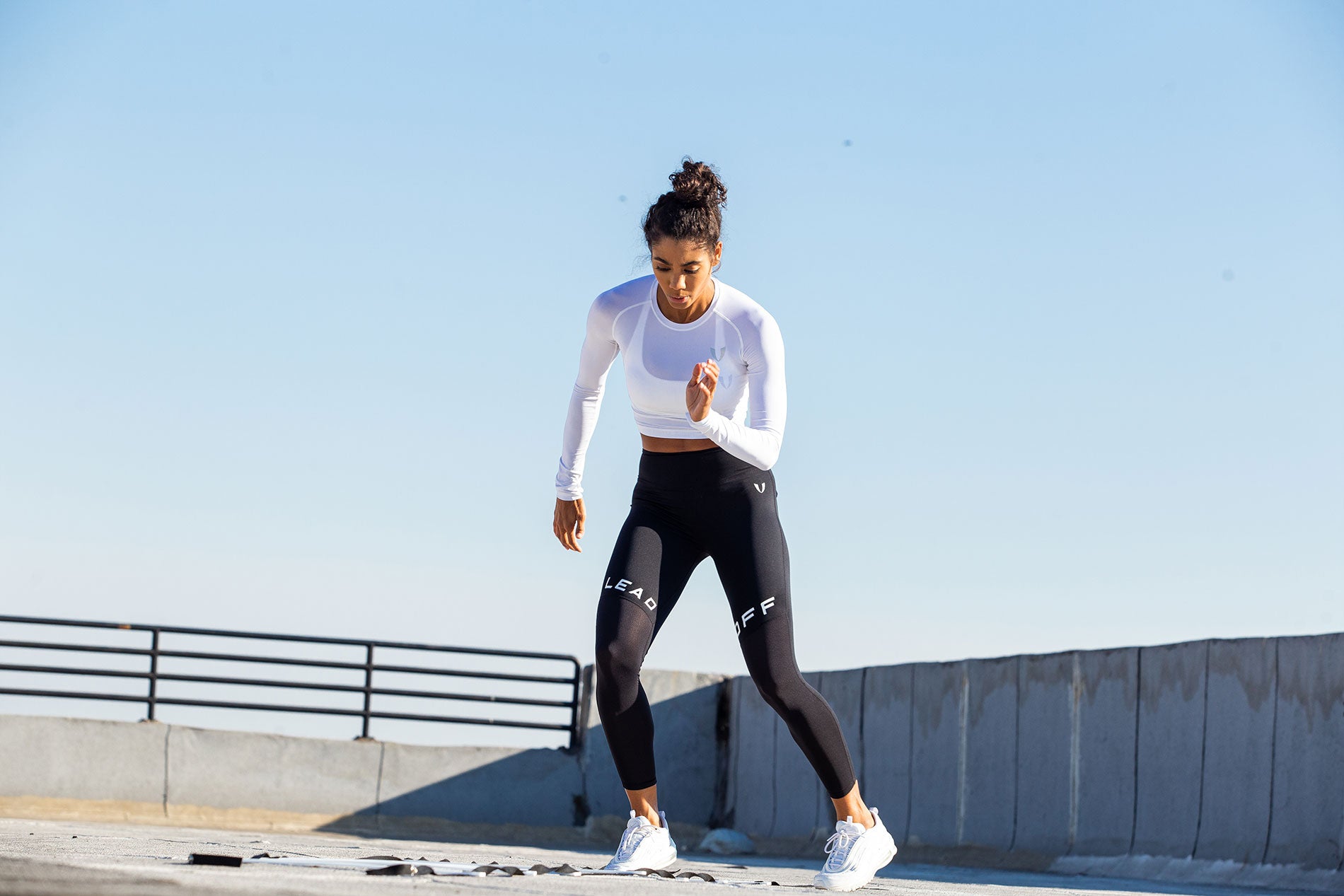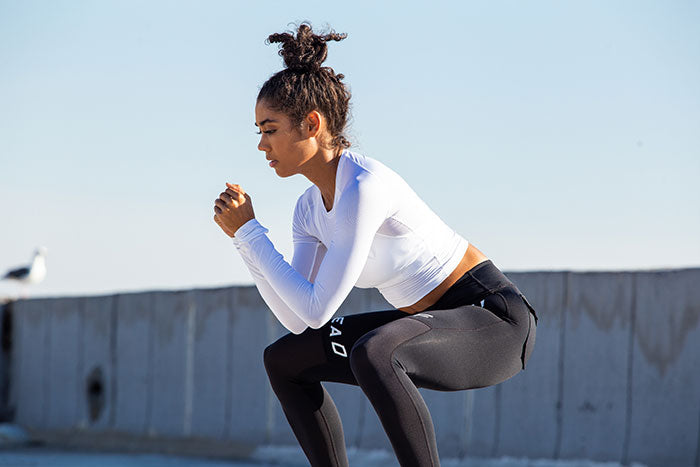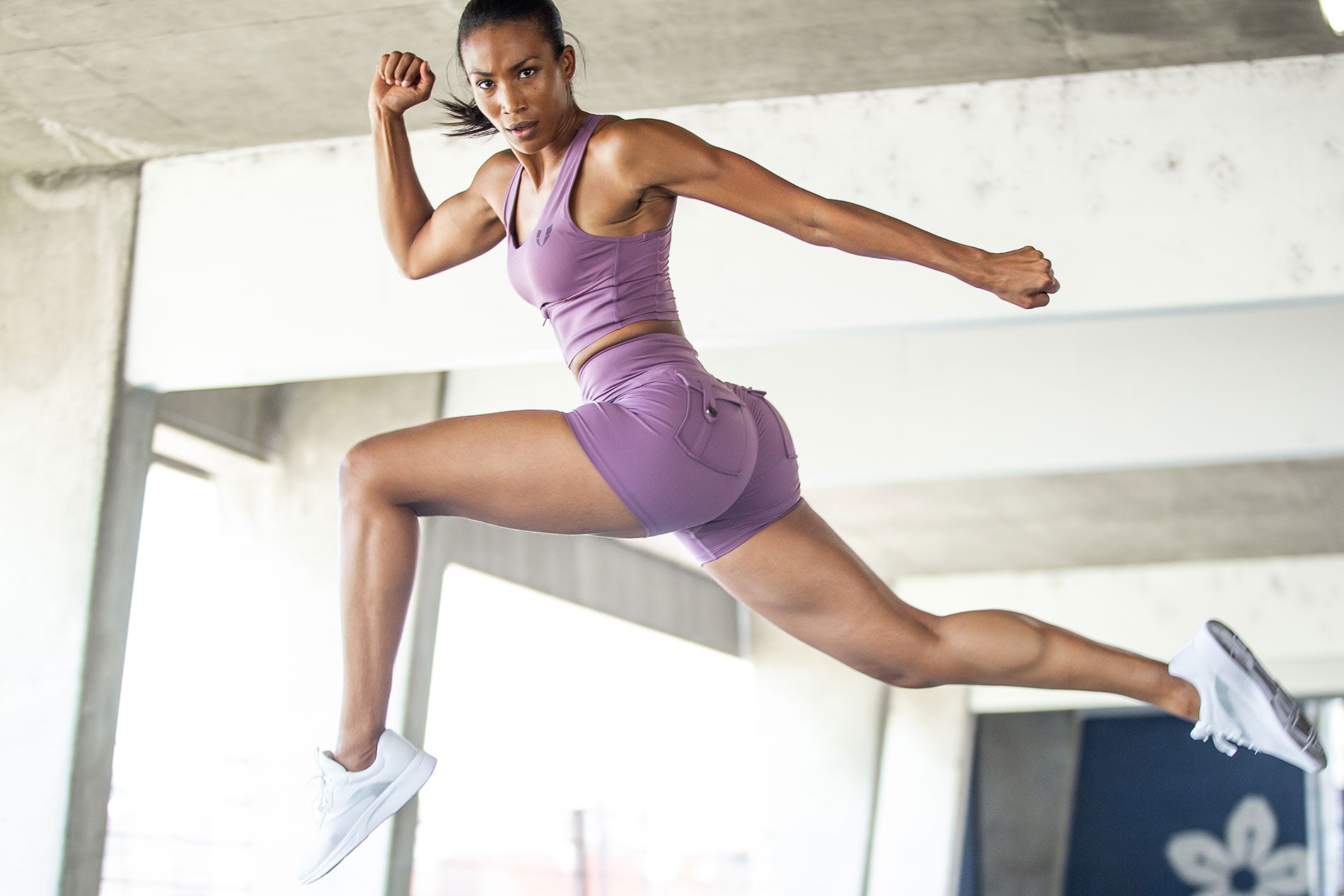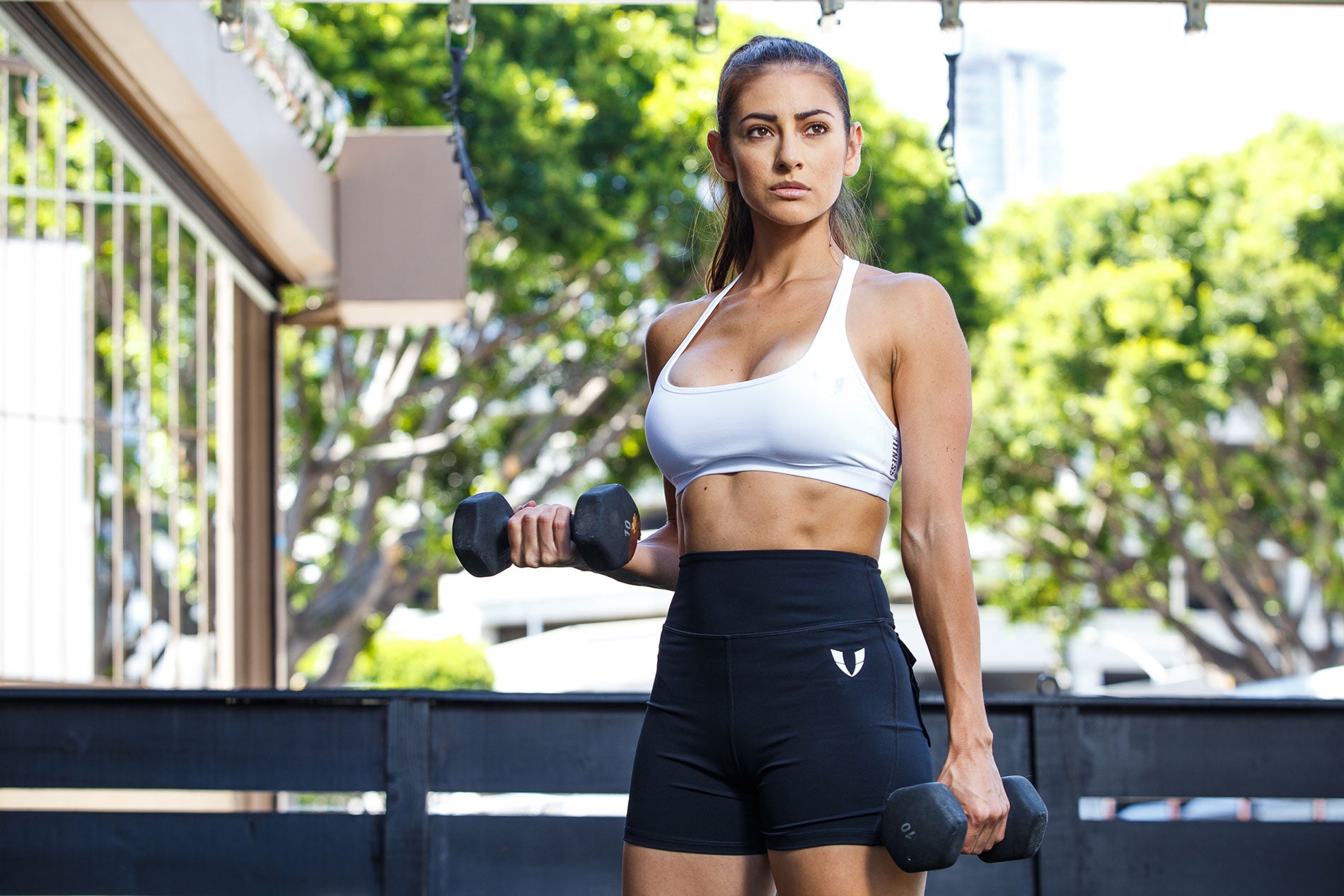
5 Simple Exercise Modifications for Knee Pain
Knee probs? We got you girl! We’ve been getting a bunch of questions lately about what to do when you have knee pain, so we wanted to put a few simple modifications together just for you. Whether your Q is “Why do squats hurt my knees?” or “What’s a good alternative to lunges?”, remember no two bodies are alike, and it’s always best to start with a trip to your doc to ID any underlying issues. (The knee is the most injury-prone joint, and we want to make sure it’s protected no matter what!)
Cleared to exercise, and still want a few exercise modifications at your disposal? Here are some of our five exercise modifications to protect your knees and avoid discomfort. Because who wants to miss leg day, right?! And remember: always listen to your body and do what feels good! You’ll keep gettin’ stronger every day!
5 Exercise Modifications to Help with Knee Pain
The Move: Squat
The Modification: Don’t go as deep. If you find that going so low that your hip crease comes below your knee crease causes pain in the knee, keep your hips a little higher. The depth of your squat depends on your experience with the exercise, your range of motion, and simply how it feels for you! If it doesn’t feel good to drop it low, then stand a little taller. It’s all about doing what’s right for you! For this exercise, you need to wear a pair of sports leggings with excellent elasticity.

The Move: Lunge
The Modification: Make ’em stationary. By keeping your lunges in one spot, you not only eliminate some of the impacts of stepping forward or backward, but you can also properly align your legs. Sometimes, when the front knee goes over the toe (or the weight even shifts off the heel and to the toe of that front foot), you might experience some discomfort. To set up your feet at the ideal distance, start from the bottom. Both knees should have a 90-degree bend. Stand up from there and keep your feet in place. Another trick: Place a box in front of your front toe. This will keep that knee from moving too far forward. A block under the back knee also makes the move more comfortable, so you’re not dipping as low.
The Move: Curtsy Lunge
The Modification: Keep it shallow or switch it up. We love a good curtsy lunge to work the glutes, but sometimes, if you have knee pain, it can put your knee joints in a position that’s just not so comfy. When you step back on a diagonal, keep the bend in both knees to 90 degrees or higher. Squeeze your inner thighs to keep your front knee tracking over your ankle, too. Still feel pain, even when you don’t drop as low? Switch the curtsy to a regular reverse lunge instead. That straight-back step might just work better for your lower half.
The Move: Side Lunge
The Modification: Check your alignment. When you step out to the side for a lateral lunge, the position of your shoulders, hips, knees, and ankles is super important! Think about shifting your hips straight back and down, while your knee and toe point forward. Your feet should be parallel to each other. It’s a common mistake to step out with toes out, which puts stress on the knee. And it’s easy to turn your knee out, too, which also won’t feel so good. Take your time and line everything up properly! Also, when in doubt, don’t go so low.
The Move: Jumping Jacks or any high-impact move
The Modification: Take out the jump. Sometimes, the intense impact of doing a plyometric move can put a little ache in your knees. Instead of jumping up into the air during exercises like jumping jacks, squat jumps, burpees try a low-impact modification. For jacks, step out to the side. Jump squats and plyo lunges turn into fast tempo bodyweight squats and reverse lunges. And as for burpees, step it forward and back instead of making it so explosive.



의견을 남겨주세요
이 사이트는 hCaptcha에 의해 보호되며, hCaptcha의 개인 정보 보호 정책 과 서비스 약관 이 적용됩니다.